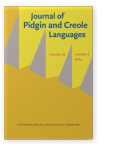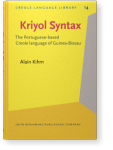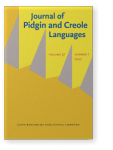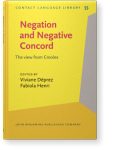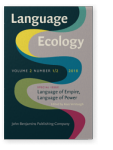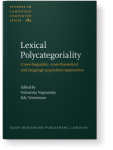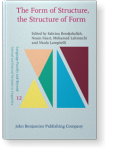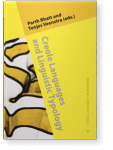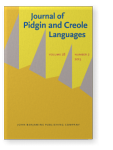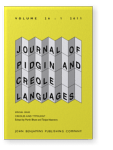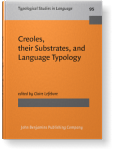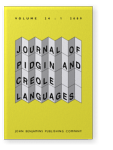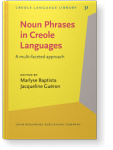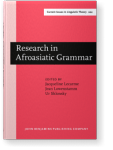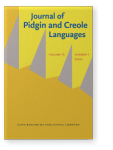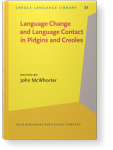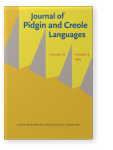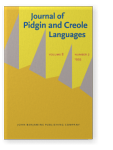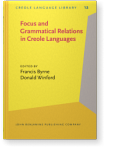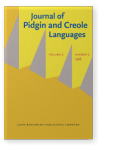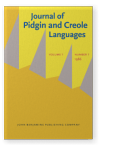Alain Kihm
List of John Benjamins publications for which Alain Kihm plays a role.
Journal
Title
Kriyol Syntax: The Portuguese-based Creole language of Guinea-Bissau
Alain Kihm
[Creole Language Library, 14] 1994. xii, 310 pp.
Subjects Contact Linguistics | Creole studies | Romance linguistics | Syntax
2018 Negation and negative concord in Guinea-Bissau Kriyol (in comparison with Portuguese, substrate-adstrate languages and other Portuguese Creoles) Negation and Negative Concord: The view from Creoles, Déprez, Viviane and Fabiola Henri (eds.), pp. 225–255 | Chapter
Unlike its Portuguese source, Guinea-Bissau Kriyol is a strict negative concord (NC) language, meaning that everything that can be negative in a negative sentence must be negative: cf. Ningin ka bindi nada {nobody neg sell nothing} ‘Nobody sold anything’. Portuguese, in contrast, is a partial NC… read more
2018 Língua de Preto , the language of the African slave community in Portugal (16th–19th centuries) Language of Empire, Language of Power, Versteegh, Kees (ed.), pp. 77–90 | Article
Língua de Preto ‘language of the Blacks’ (LdP) is the conventional name for the basic variety of Portuguese spoken by the West African slaves deported to Portugal from the end of the 15th century onwards, who formed an important and visible minority within the Portuguese population until the… read more
2017 Categorial flexibility as an emergent phenomenon: A comparison of Arabic, Wolof, and French Lexical Polycategoriality: Cross-linguistic, cross-theoretical and language acquisition approaches, Vapnarsky, Valentina and Edy Veneziano (eds.), pp. 79–97 | Chapter
The present paper takes the view that categorial flexibility (CF, also called polycategoriality), i.e. having the “same” items function both as nouns and verbs, is not a possible substantial property of lexemes. Given the semantic quirks that often characterize such alternative uses (e.g. a tree vs. read more
2014 On templates The Form of Structure, the Structure of Form: Essays in honor of Jean Lowenstamm, Bendjaballah, Sabrina, Noam Faust, Mohamed Lahrouchi and Nicola Lampitelli (eds.), pp. 235–252 | Article
Severe limitations apply to the sound shape of roots and stems, yielding ‘templates’ (in one sense of the term). Templaticity is a property of human language. Two kinds, default and nondefault, ought to be distinguished, however. Default templaticity amounts to keeping the bulk and phonetic… read more
2013 Pidgin-creoles as a scattered sprachbund: Comparing Kriyol and Nubi Creole Languages and Linguistic Typology, Bhatt, Parth and Tonjes Veenstra (eds.), pp. 95–140 | Article
That creole languages resemble each other beyond the diversity of their lexifiers and formative environments is a fact. Similarity should not be overstated, however, as creole languages also differ from each other in important ways. Hence the fundamental issues of creole studies: why are Creoles… read more
2013 Língua de Preto, the Basic Variety at the root of West African Portuguese Creoles: A contribution to the theory of pidgin/creole formation as second language acquisition Journal of Pidgin and Creole Languages 28:2, pp. 203–298 | Article
Língua de Preto
falar Guiné
In the first part of the study (sections 1–4), we substantiate our claim that such literary representations are indeed reliable renditions of the linguistic medium African slaves in Portugal actually used in their interactions with the white population and… read more
2011 Pidgin-creoles as a scattered sprachbund: Comparing Kriyol and Nubi Creoles and Typology, Bhatt, Parth and Tonjes Veenstra (eds.), pp. 43–88 | Article
That creole languages resemble each other beyond the diversity of their lexifiers and formative environments is a fact. Similarity should not be overstated, however, as creole languages also differ from each other in important ways. Hence the fundamental issues of creole studies: why are Creoles… read more
2011 Substrate influences in Kriyol: Guinea-Bissau and Casamance Portuguese-related Creole Creoles, their Substrates, and Language Typology, Lefebvre, Claire (ed.), pp. 81–103 | Article
Kriyol is a Portuguese-related creole language spoken in Guinea-Bissau (former Portuguese Guinea) and Senegalese Casamance. Besides being the primary language of an important community, it also serves as a lingua franca in a multilingual country where Portuguese, although being the official… read more
2007 5. On the interpretation of bare noun phrases in Guinea-Bissau Portuguese Creole (Kriyol) Noun Phrases in Creole Languages: A multi-faceted approach, Baptista, Marlyse and Jacqueline Guéron (eds.), pp. 145–169 | Chapter
Guinea-Bissau Portuguese Creole or Kriyol is one of those languages where bare nouns have free access to syntax. Bare nouns are given a restrictive definition: only nouns appearing in their root form, i.e. not marked for number, are considered bare. Kriyol is thus different from Portuguese or… read more
2000 Wolof Genitive Constructions and the Construct State Research in Afroasiatic Grammar: Papers from the Third conference on Afroasiatic Languages, Sophia Antipolis, 1996, Lecarme, Jacqueline, Jean Lowenstamm and Ur Shlonsky (eds.), pp. 151–181 | Article
2000 Are Creole Languages “Perfect” Languages? Language Change and Language Contact in Pidgins and Creoles, McWhorter, John H. (ed.), pp. 163–200 | Article
1999 Focus in Wolof: A Study of What Morphology May Do to Syntax The Grammar of Focus, Rebuschi, Georges and Laurice Tuller (eds.), pp. 245–274 | Article
1995 Tayo, The Strange Bird from New Caledonia: Determiners and Tense-Aspect in Tayo and their Implications for Creolization Theories Journal of Pidgin and Creole Languages 10:2, pp. 225–252 | Article
According to the Language Bioprogram Hypothesis, the core grammars of all "real" creoles should be alike to a significant degree. Real creoles are then defined as those creoles that were born on plantations, as opposed to those that appeared in so-called fort situations, that is, around trading… read more
1993 What is it that you said? A study of Obligatory Focalization in Two Creoles and Beyond Focus and Grammatical Relations in Creole Languages: Papers from the University of Chicago Conference on Focus and Grammatical Relations in Creole Languages, Byrne, Francis and Donald Winford (eds.), pp. 141–162 | Article
1990 Complementizer, Verb, or Both? Kriyol Kuma Journal of Pidgin and Creole Languages 5:1, pp. 53–70 | Article
So-called "pseudo-complementizers," i.e., complementizers that are homophonous with a verb meaning 'say', are a widespread feature among creole (and some noncreole) languages. Kriyol kuma belongs to this category. The homophony thesis is criticized, and it is argued that kuma is a verb in all of… read more
1986 Nasality in Kriol: The Marked Case? Journal of Pidgin and Creole Languages 1:1, pp. 81–107 | Article
